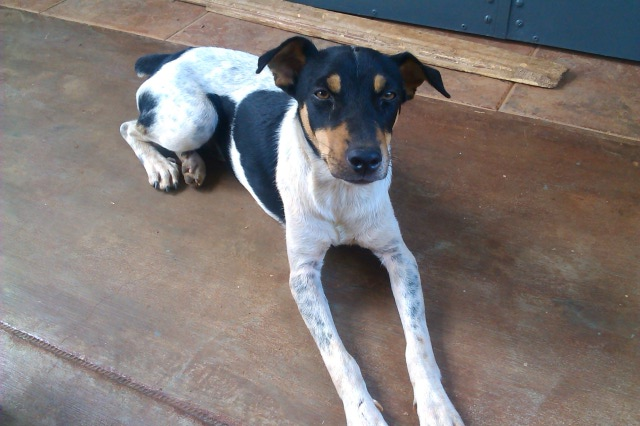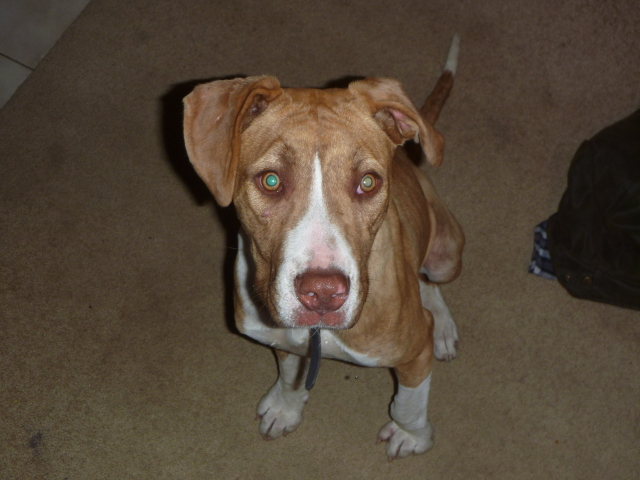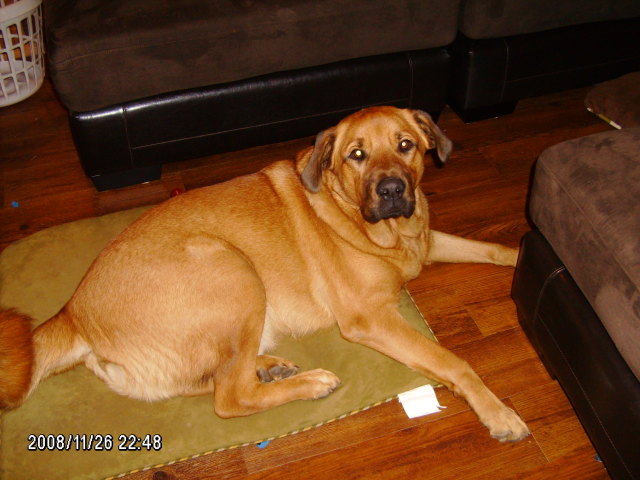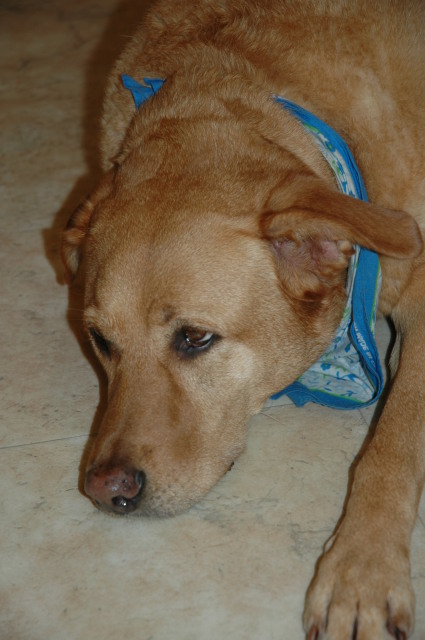QuestionHello
How can I stop my blue heeler x from barking at/trying to bite friends, family, the mail-man and anyone who passes the yard?
Also she bite my shiz-tuz and jumps up on people how can I stop this?
Would I be able to teach her a few commands such as sit/down and stay inhome?
Would a muzzle work for geting her used to people?
Would a head collar or harness work to stop her from pulling on the leash?
I have a 3 foot crate but I cant get her in it how do I get her used to it? What should I put in it for her to lie on she chews everything?
thanks
AnswerThe herding dogs, including the Blue Heelers, are known for their barking and biting. Some of the biting is a form of play. Put 2 younger dogs together and will immediately start biting each other. This is OK as long as both dogs are enjoying it. You may have to stop her, if it is too much for the older, smaller dog.
You need to get control of this dog now, before it gets any older.
Having a good pack structure reduces such problems. The dogs see all the
people and dogs in the household as a pack with each having their own rank in
the pack and a top dog. Life is much easier if the 2 legged pack members
outrank the 4 legged ones. You can learn to play the role of top dog by
reading some books or going to a good obedience class. A good obedience class
or book is about you being top dog, not about rewarding standard commands with
a treat. Start at http://www.dogsbestfriend.com/
One of the first steps is to teach the dog to walk nicely on lead. Easier dogs will give up their pulling with a few good snaps of the leash
combined with a stern "Bad dog!". You can work up to forceful corrections
with the leash doubled up in both hands and your whole body behind it. But
you don't want to use any more force than you need. One gentle technique I
like is to just stop when she pulls. She wants to go. If you move forward when
the leash is slack, and stop when she pulls, she should quickly figure out the
only way to get to go, is not to pull. This is about teaching her not to
pull, not getting somewhere. The man that taught it to me said "If in a half
hour you haven't made it out to the front walk, fine, you have taught her a
lesson.
If you dog is at least 4 - 5 months old, start with a good 6' leather leash and
a sturdy slip collar, the metal chain
ones with the rings on each end. You want the shortest one that will go on
and off easily. If you walk with the dog on the left, pull the chain through
one loop forming a "P". Facing it, slip it over its head. The free end
should come over the neck to the leash, and the other end should drop slack
when there is no pull on the leash. Before 4 months use a conventional flat
collar to protect the tender young neck. Still, you may want to switch to a head collar. The leading brands are Promise, Halite, and Gentle Leader. They have a
strap going around the dogs nose looking something like a muzzle. They work
by pulling the dogs head around. No other way gives you such great control
with so little force. The prong collar is now a dangerous relic of value only
for its macho looks. Do not consider using one without hands on instruction
from somebody with plenty of experience with them.
The solution to jumping up and people and biting, is to consistently correct her each and every time. This will become more effective as the obedience training convinces her you are top dog. There are a number of techniques that work on the jumping. Pick what seems to work best, and stick to it. You can grab her paws and hold them. She won't like that and soon will quit giving them to you. The old knee in the chest works, as well as stepping on her back feet. For biting, yell ouch and pull your hand away, or clamp her mouth shut. Accompany all these corrections with a ''Bad dog!'' that sounds like you mean it, not loud, but in a deep, growl like voice.
Start out putting the crate in one of its favorite sleeping spots. Next, put its toys in, maybe treats too. Feeding the dog there is a great way to convince it the crate is a good place. It is also a great way to maintain order with more than one dog at feeding time. Skip the bedding. Don't leave her alone in the crate with anything except sturdy chew toys.
Feeding time is a great time to show you status as top dog. You may want to delay her feeding time until after you have eaten. Once she has had enough lessons to understand ''Sit!'', even if she doesn't obey, demand she sits while you get her food ready. Make her hold the sit until you have placed the food dish on the floor or in the crate. Every time she moves, you stop or take the food away, tell her ''Sit, stay!'', and do not move until she sits. The first few days will be tough, but she will catch on. Even the most difficult dog is no match for a stubborn owner. All command need to be in a firm, but again, not loud voice.
If not already, having her spayed will help too. There is no good reason not to with a female cross bred. Besides reducing behavior problems, it eliminates the hassle of her seasons. Their behavior becomes more extreme weeks before the bleeding starts. Then they will make strenuous, creative efforts to escape. Once loose, getting bred is minor compared to some of the other things that can happen to a dog running loose. Unplanned breedings or even a bath or swim can cause expensive to cure if not fatal infections. Spaying prevents many cancers later. having her spayed will make life more enjoyable for both her and you.

 Mini-Daschund Question
Question
Baby
I got a rescus mini about 6 years ago. &n
Mini-Daschund Question
Question
Baby
I got a rescus mini about 6 years ago. &n
 Dog breed confusion
Question
photo of Toby 1 photo of Toby 2
H
Dog breed confusion
Question
photo of Toby 1 photo of Toby 2
H
 Malnurished Bull Mastif x Great Dane ;
Question
Sticks
Hi,
Ive recently, (the last 24 hours) b
Malnurished Bull Mastif x Great Dane ;
Question
Sticks
Hi,
Ive recently, (the last 24 hours) b
 mouthing; pawing, wont drop it
Question
My puppy Trigger
I have a 10 month old LARGE (
mouthing; pawing, wont drop it
Question
My puppy Trigger
I have a 10 month old LARGE (
 Senior dog not eating
Question
Meggie Girl
I will be so grateful if you can h
Senior dog not eating
Question
Meggie Girl
I will be so grateful if you can h